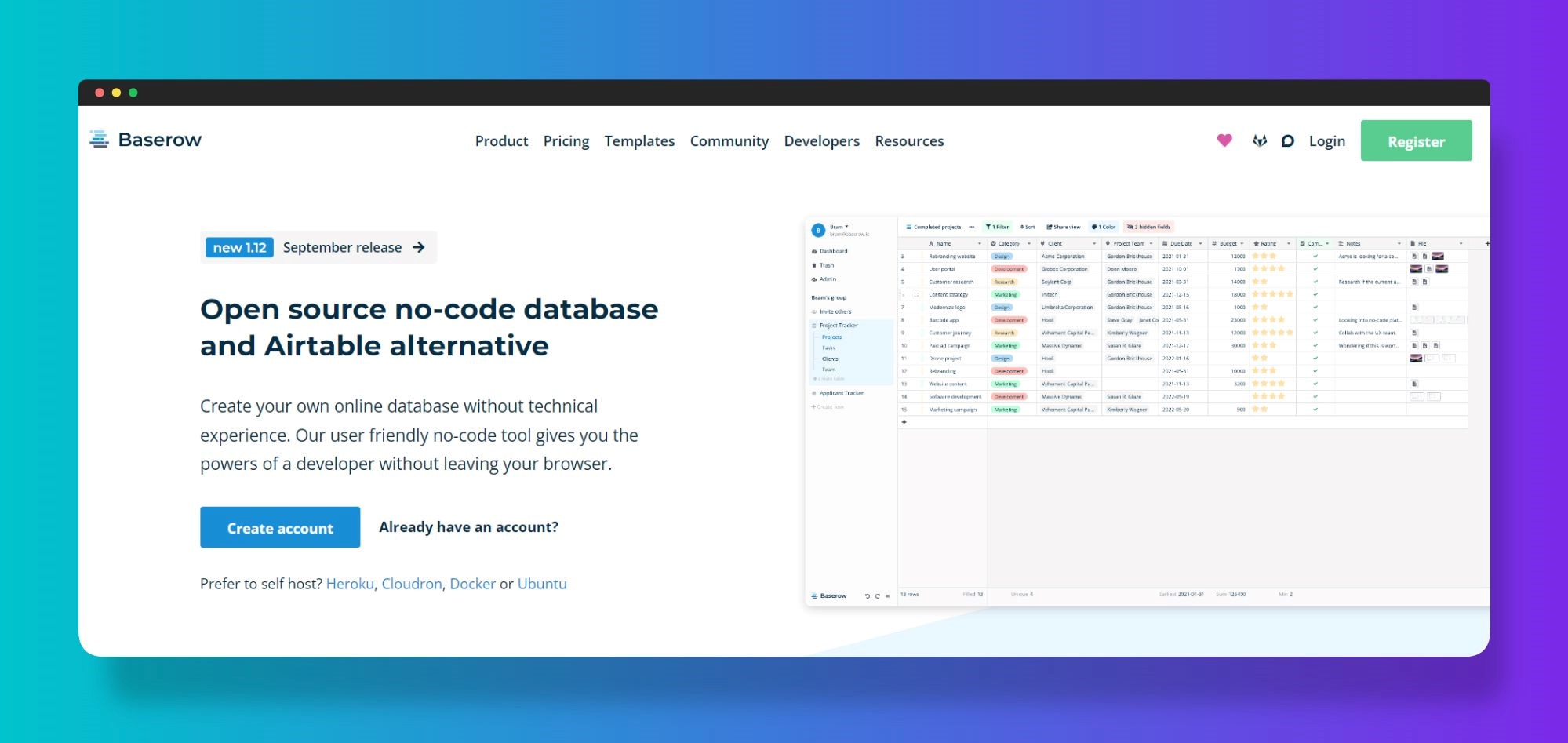No-Code Open Platform Database Development: Encouraging Businesses to Build Faster
No-Code Open Platform Database Development: Encouraging Businesses to Build Faster
Blog Article
Discover Exactly How Scalable Databases Can Be Utilized Without Coding to Enhance Your Organization Procedures
In today's fast-paced business atmosphere, the capability to take care of and analyze information successfully is extremely important. no-code. Scalable data sources, specifically when coupled with no-code remedies, supply a transformative strategy that encourages non-technical individuals to enhance operations.
Understanding Scalable Databases
Scalable data sources are important for modern-day business operations, enabling companies to efficiently handle raising volumes of information without sacrificing efficiency. These databases are designed to adjust and grow to the changing needs of a service, making certain that they can handle larger datasets and more complex questions as business needs develop.
Recognizing scalable data sources entails recognizing their two primary types: vertical scaling and horizontal scaling. Vertical scaling, or "scaling up," includes including even more power (CPU, RAM) to an existing web server to improve efficiency. Alternatively, straight scaling, or "scaling out," requires including more servers to distribute the load, which commonly causes better adaptability and mistake resistance.
An additional critical aspect is the architecture of scalable databases, which can be either relational or non-relational. Relational data sources, such as MySQL and PostgreSQL, are structured and use SQL for inquiries, while non-relational databases, like MongoDB and Cassandra, supply even more versatility with disorganized data.
Eventually, understanding scalable data sources is important for services intending to leverage information as a strategic asset, allowing them to continue to be affordable in a significantly data-driven environment.

Benefits of No-Code Solutions
Unlocking the potential of no-code options encourages companies to simplify operations and improve performance without the need for substantial programming knowledge. These platforms permit non-technical users to produce, customize, and manage databases easily, hence democratizing accessibility to innovation throughout teams.
Among the primary benefits of no-code services is their rate of execution. Businesses can swiftly release applications and automate processes, dramatically minimizing the time spent on growth cycles. This agility allows companies to respond promptly to market modifications and client demands, fostering a competitive edge.
Additionally, no-code platforms reduce reliance on IT departments for everyday jobs, enabling technological groups to concentrate on even more complicated jobs that need specialized skills. This shift not only optimizes source allocation but additionally advertises technology within the company.
Cost-effectiveness is an additional benefit, as no-code services can lower development and maintenance expenses. By reducing the need for coding experience, firms can harness the capacities of their existing labor force without the expenses of employing extra workers.
Popular No-Code Database Tools
The rise of no-code services has led to the development of various database tools that deal with organizations looking for efficiency and accessibility. These devices encourage customers with minimal technological expertise to develop, handle, and manipulate data sources effortlessly.

Caspio stands apart for its ability to build internet applications without any kind of coding. It enables services to produce robust data sources and release applications rapidly, accommodating numerous sector requirements. Propensity provides effective data and user-friendly user interfaces administration capabilities, making it possible for companies to construct custom-made applications tailored to their operations.

Usage Instances in Business Procedures
Just how can companies take advantage of data source devices to enhance their operations? Scalable databases give organizations with powerful abilities to handle and assess data without the need for extensive coding expertise. These devices can simplify different organization processes, eventually causing enhanced efficiency and performance.
One famous use instance is consumer partnership administration (CRM) Services can use scalable data sources to track consumer interactions, choices, and comments, enabling personalized interaction and much better service. By systematizing this info, teams can team up better and react to customer demands in real-time.
One this hyperlink more substantial application is stock monitoring. Business can use no-code database devices to keep track of supply levels, track deliveries, and forecast demand. This ensures ideal supply levels, lowers waste, and reduces stockouts.
In addition, project monitoring can benefit from scalable data sources by permitting teams to take care of tasks, due dates, and sources in a linked platform. With real-time updates and information visualization, project supervisors can make educated decisions.
Getting Going With Execution
Applying scalable databases in service procedures needs an organized approach to make certain successful combination and utilization. The initial action is to conduct an extensive demands analysis, identifying particular service needs, data types, and expected growth patterns. This foundational understanding will certainly guide the choice of the ideal database solution.
Next, pick an easy to use, no-code database system that straightens with your operational goals. no-code. Several modern options offer instinctive user interfaces, permitting non-technical individuals to handle information properly. After picking a system, develop a clear information design that outlines how data will certainly be arranged, accessed, and kept
Training is crucial; guarantee that employee are furnished with the required skills to utilize the database. Take into consideration giving tutorials or workshops to acquaint personnel with the system's performances.
Final Thought
In verdict, the assimilation of scalable data sources through no-code solutions presents substantial benefits for business procedures. Eventually, leveraging these modern technologies can lead to improved productivity and operational performance, positioning organizations for sustained development in a competitive landscape.
One prominent no-code data source tool is Airtable, which incorporates the functionality of a spread find out here sheet with the power of a database.Exactly how can businesses utilize database devices to improve their procedures? Companies can make use of scalable databases to track client interactions, preferences, and responses, allowing personalized interaction and better solution.Implementing scalable data sources in organization operations needs an organized method to guarantee effective integration and article source use.In conclusion, the integration of scalable databases with no-code options offers significant advantages for company operations.
Report this page